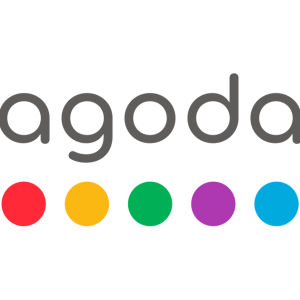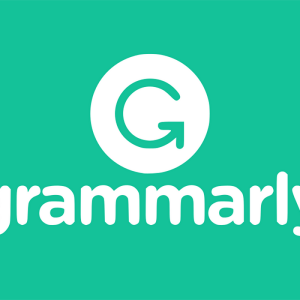
Samsung is putting a new spin on the smart home hub with its SmartThings Station. Starting at $59.99, the small black box features a programmable button that can trigger smart home automation routines like setting your thermostat or locking your front door. It’s compatible with a wide range of Samsung and third-party smart home devices, including Matter gadgets, and its companion app makes it easy to program routines you can run from the Station with a tap. It lacks a speaker and microphone, so it doesn’t play music or allow for voice control. Instead, this hub does double duty as a wireless charging pad for Qi-compatible devices. If you’re sick of speaking smart home commands and want a single button that makes it easy to run routines, the SmartThings Station is a convenient option worth considering, especially if you use a Galaxy phone.
Getting to Know the SmartThings Station
The SmartThings Hub is a simple device. It features a physical button that supports up to three smart home automations you can run with a tap, a tap and hold, or a double tap. It also wirelessly charges your phone.
Measuring 3.5 by 3.5 by 0.9 inches (LWH), the SmartThings Station is reminiscent of a coaster. The Smart Button resides in the upper right corner and a direct cooling air vent frames the wireless charging pad on top. Two indicator lights appear on the front edge: a wireless charging indication LED on top and a hub indication LED below. The USB-C port for the charger is located on the back and there’s a Reset button on the bottom.
Samsung sells the SmartThings Station with or without a power adapter. The base model, which does not include an adapter, costs $59.99. For this review, the company sent me the $79.99 version, which includes a Samsung 25W Super Fast USB-C wall charger in the box. Samsung sells this wall charger(Opens in a new window) separately for $20, so there’s no discount when you buy it with the SmartThings Station.
The SmartThings Station’s wireless charging pad works with most Qi-compatible devices, including iPhones. Charging speeds vary by device. It supports Super Fast Charging, up to 15W for Samsung Galaxy series phones, but its charging speeds max out at 7.5W for Apple devices and 5W for other Qi handsets. Note that Super Fast Charging for Galaxy devices requires a 25W or above power adapter.
For connectivity and smart home device control, the SmartThings Station supports Bluetooth, Matter, Thread, Wi-Fi, and Zigbee. It pairs with devices running Android 8.0 and iOS 14 and later via the Samsung SmartThings companion app (available for Android and iOS), which lets you set up and manage smart home devices and automations. You must sign up for a Samsung account (if you don’t already have one) to use the SmartThings Station as a smart home hub.
Many smart speakers and smart displays like the Amazon Echo, the Google Nest Hub, and the Apple HomePod, can serve as a smart home hub, giving you the ability to control compatible connected devices with voice commands. The SmartThings Station does not have a microphone to hear you or an integrated virtual assistant; it only supports smart home device control via the button or companion app.
SmartThings Station Third-Party Device Support
To control Samsung and third-party smart home devices via the SmartThings Station, you must first add them to the SmartThings app. Before purchasing the SmartThings Station, make sure the existing devices you have at home work with the SmartThings app(Opens in a new window) (several of my devices do not). At the time of this writing, Wyze does not directly integrate with SmartThings, nor does Furbo, for instance.
It took me about 30 minutes to successfully connect three third-party devices to the SmartThings app, as some are easier to link than others. Like setting up the SmartThings Station itself, adding a third-party Matter-enabled device with a QR code was quick and easy. After scanning the QR code for my Eve Energy Smart Plug & Power Meter(Opens in a new window), a product I also tested with the second-generation HomePod, the plug connected to SmartThings right away.
You can also link your account for certain third-party smart home brands with SmartThings to add your existing devices that way. This method works with brands like August Home, Google Nest, and Philips Hue. It’s a bit tedious since you must enter your account credentials for the third-party brand and allow data access permissions, but I managed to successfully connect my Google account to SmartThings, allowing me to control my Nest Thermostat via Samsung’s app and hub.
I also linked my Yale account so I could add the Assure Lock 2 to the SmartThings app. Note that integrating the Assure Lock 2 with SmartThings requires an activated Wi-Fi or Matter Smart Module in your lock. I first attempted to scan the QR code for my Assure Lock 2, but the SmartThings app said it was unsupported, so I had to go through the account-linking process.
Multiple Uses
The Samsung SmartThings Station is a unique product that functions as a smart home hub and wireless phone charger. With support for Matter, Thread, and Zigbee, it should play nice with most smart home gear. Connecting your devices to the SmartThings app can be tedious, but the same can be said of competing products. Programming the Smart Button is simple and you can change its three actions whenever you like. The embedded Qi wireless charging is a useful bonus. Smart speakers and displays that function as hubs are arguably more useful, but the SmartThings Station is an excellent device in its own right.






